The side lunge, also referred to as the lateral lunge, is an intense lower-body movement which strengthens the glutes, hamstrings, quads, and inner thighs, as well as enhances balance, movement, and functional strength. This exercise is usually not part of classic exercises centring around the forward or back movement, but which are very useful for individuals who are of all levels of fitness, including beginners, athletes, or even the elderly. Lateral lunge, when performed properly, allows tightening of legs, stability of the core and decreases injury risk, as it is a crucial exercise of the lower body or total one.
What Is a Lateral Lunge?
Lateral lunge is a movement in which one leg is moved to the side, while the straight and other leg is straight and bent at the knee and hip levels. This exercise boosts the ability of several muscles in addition to boosting hip and hamstring mobility. However, nearly everybody calls it the side lunge; the lateral lunge is the one which focuses particularly on the side motion along the lateral plane.
This practice can be referred to using several names, which are dependent on the workout culture or style. It is sometimes referred to as the side squat, and even in sport training sessions, it can be referred to as a frontal plane lunge. In spite of the name, the movement pattern is the same: step aside, bend down, and push up.
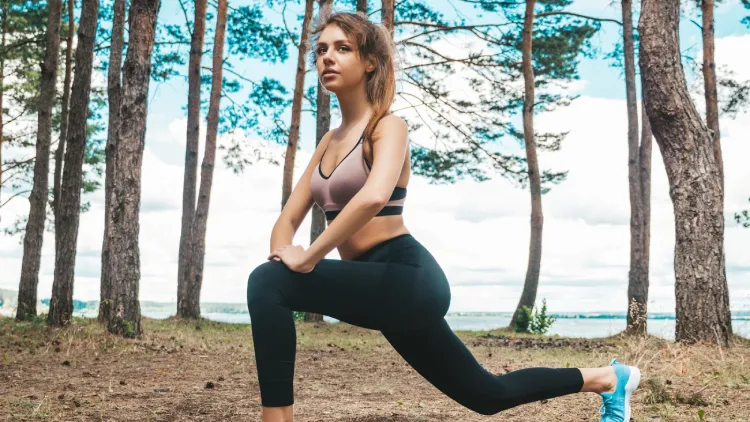
Targeted Muscles Performing a Lateral Lunge
The lateral lunge is a compound exercise as it involves the simultaneous involvement of several muscles, such as:
- Gluteus Maximus and Gluteus Medius: The glutes are some of the main target muscles. When the lateral lunge is done in proper shape, the muscles that support the hips and pelvis are strengthened, and this is quite useful when one wishes to tighten the bum or give the side glutes a boost.
- Quadriceps: The quads are a muscle in the front of the thigh which is used in the pushing stage of the movement. Knee-wise, strong quads are important and necessary in case you desire strong lower-body muscles.
- Hamstrings: The muscles are on the back of the thigh, which play an important role in hip extension and flexibility. Even though they take a minor part in the lateral lunge, they help to control the descent and hold up the glutes.
- Adductors: They are also the inner thigh muscles, and these muscles hold the body as you walk out. Those people who do not train on the lateral plane are weak.
- Core: During the movement, the obliques and abdominal muscles serve to maintain the neck, spine in a neutral position and the hips aligned.
This special combination of muscle engagement also helps to increase balance and makes you more capable of other sports exercises, such as squats, deadlifts, and lateral movement.
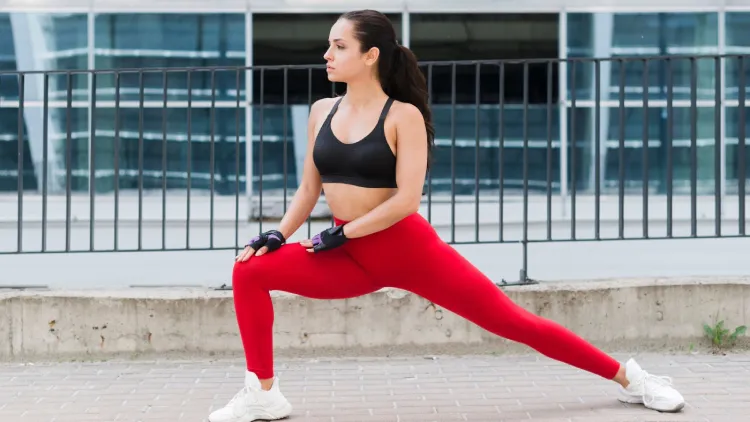
How to Do the Exercise Properly
Doing the mastery of the lateral lunge starts with the right form first. The following are the instructions on how to do it safely and efficiently:
- Position to Start: Stand straight by keeping the feet at hip length and the hands either by the waist or held together in front of your body to balance yourself.
- Take a Side Step: Leave the position, stepping to the right, making the foot press properly on the ground. Ensure that your toes are always straight forward.
- Bend and Sit Back: Take an even landing with your right foot and bend your right knee back, pushing your hips. The leg, on which you stand, must remain straight, and the foot flat on the ground.
- Keep your Chest Up: During the movement, hold your body at right angles. This helps to avoid rounding of your back.
- Return to Start: Cab through the right foot to get back to the starting point.
- Repeat the action on the opposite side to get a single rep.
Pro Tip: Do not allow your knee to collapse inwards and ensure that the knee is directly over your toes. This is to assist in placing the load in the right way, and also to guard your joints.
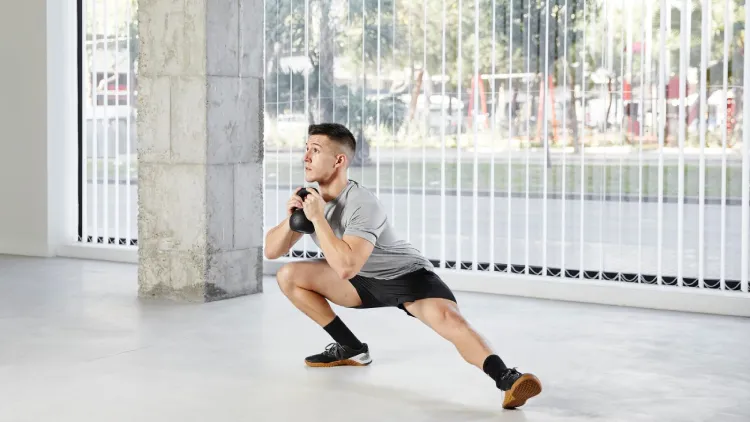
Benefits of Lateral Lunges
The benefits of the lateral lunge are numerous, thus making it one of the leg day exercises and fat-loss plans:
1. Builds Functional Strength
Lateral lunge not only strengthens the large muscles of the legs but also the important stabilising muscles. The benefit of strong stabilisers is enhanced whenever the individual is involved in regular chores like walking up and down the staircase, or stepping to the side or turning around in case of sports.
2. Improves Hip and Ankle Movements
Lateral lunges should be done frequently in order to enhance the mobility of hip joints and ankles, which can alleviate stiffness and help to improve posture.
3. Targets the Inner and outer thighs
The lateral lunge would be the best in case you want to slim your thighs or build your hips. It assists in the shaping of inner and outer thighs since it targets the adductors and the glute medius.
4. Boosts Calorie Burn
The lateral lunge can be a very important addition to a circuit or HIIT workout when it comes to calorie expenditure, and this would help in fat loss and better cardiovascular fitness.
5. Reduces Risk of Injury
Enhancement of multi-directional mobility muscles serves to reduce the risk of injury to the muscles, particularly in athletes.
Lateral Lunge Variations
After learning the simple lateral lunge, you may use any of these options to make it more difficult on the lower part of the body:
- Dumbbell Lateral Lunge: To make it more resistant, one may hold a dumbbell or two. This makes it stronger and puts an upper-body workout.
- Crossover Lateral Lunge: Get into a lunge, but take one of the legs behind. This is beneficial to the outer glutes, and this tests balance.
- Curtsy Lunge: This exercise can be used to work on the glute medius and enhance hip movement.
- Russian Lunge: It is also called a split lunge with a twist, a technique that will incorporate the engaging of torso rotation and use of the obliques to complete a core workout.
- Zombie Lunge: Lunge with hands extended at the front of them, where the arms are straight ahead, and the lower body is exercised, but the muscles around the shoulder and the core are engaged.
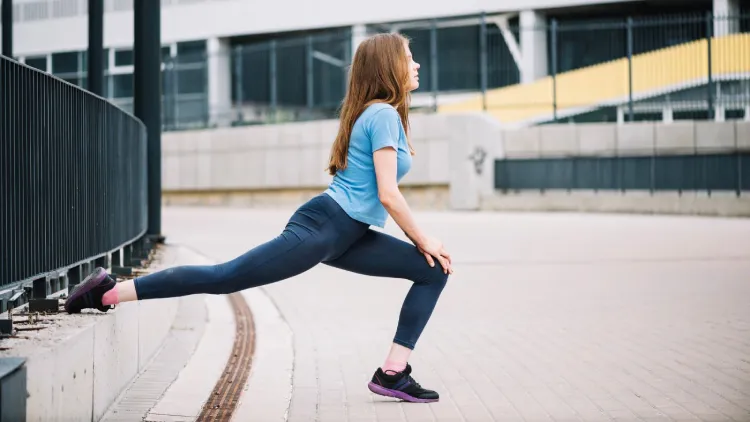
Common Mistakes to Avoid
- Stopping Hips Back: This will minimise the use of glutes and may undue pressure on the knee.
- Poor Posture: You must always have your stepping foot flat and facing forward.
- Bent Forward: This may be a strain to the lower back. Keep your chest lifted.
- Knee on Straight Leg- Locking: It is always advisable to have a slight bend in the straight leg to prevent damage.
The way to use Lateral Lunges in your exercise
Lateral lunge is a multi-purpose exercise that is suitable for a variety of training programs:
- Warm-Up: It can be used to loosen up the hips and engage the lower body muscles before heavy lifting.
- Strength Training: Do 3 sets of 10-12 reps each side using moderate weights.
- Circuit Training: Combine this with a bodyweight or resistance-band cycle to make it a workout of complete body workout.
- Mobility Days: Combine with stretches to enhance flexibility.

Conclusion
The lateral lunge is a necessary training exercise that everyone should incorporate to become stronger in the legs, improve footwork, and enhance overall lower-body performance. This exercise provides enormous benefits to any kind of athlete, whether you are a beginner or an advanced one, and it makes you move better in every direction. The ability to exercise the thighs, buttocks, and strengthen mobility and tone fat, the lateral lunge definitely deserves its place among the most useful and efficient exercises to guarantee lifelong fitness.
Frequently Asked Questions
1. Should beginners do lateral lunges?
Yes, lateral lunges can be adopted by beginners since this can be done using only body weight and adjusted according to fitness level. Begin using a slow intensity and emphasise form to prevent knee stress and develop balance and coordination.
2. Are lateral lunges useful in making the thighs skinny?
Absolutely. Because of the fact that lateral lunges are focused on inner and outer thighs, as well as glutes, they may be used to make the thigh area leaner and fitter, and it is actually in combination with routine cardio and a balanced diet.
3. Do lateral lunges have any negative influence on the knees?
Lateral lunges do not harm the knees when correctly performed, that is, with the knee over the toes and a straight back. They are even capable of tightening the muscles exposed to the joint, making the possibility of knee injuries less likely in old age.
4. What are the muscles that lateral lunges train?
The main muscles are engaged in lateral lunges, which include the glutes, the quadriceps, the hamstrings, the adductors (inner thighs), and the core muscles. This qualifies them to be a good exercise in complete lower-body training, balance, and mobility.
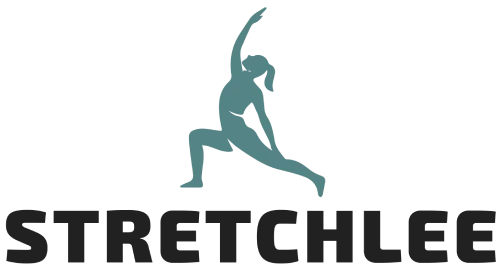
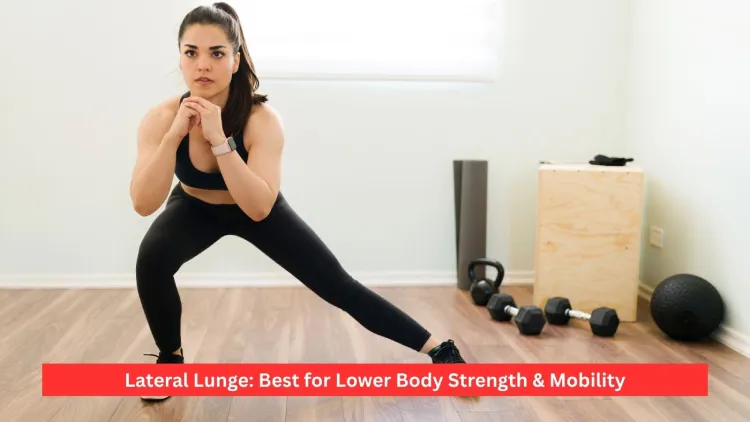

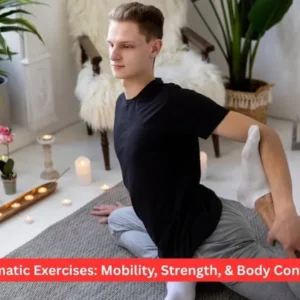
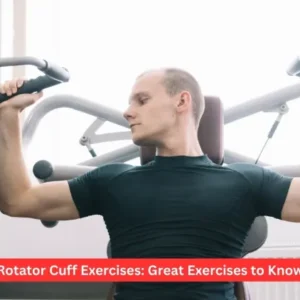

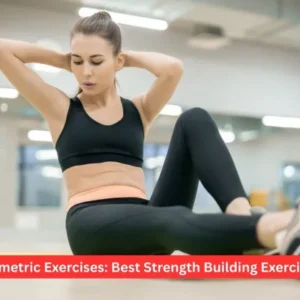

2 thoughts on “Lateral Lunge: Best for Lower Body Strength & Mobility”
Wow, amazing blog layout! How long have you been blogging for? you made blogging look easy. The overall look of your web site is wonderful, let alone the content!
Thank you so much! I really appreciate your kind words — glad you’re enjoying the content and design! 😊